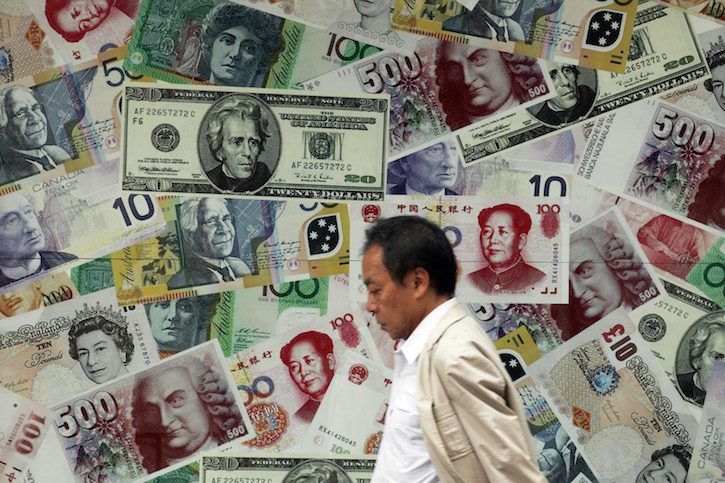
China should push further market reform to address challenges currently facing its exchange rate regime, argues former People’s Bank of China official Guan Tao in a new Paulson Policy Memorandum. Despite an August 2015 decision aimed at improving transparency in the RMB exchange rate valuation process, China’s currency regime is caught between market expectations of depreciation and a political mandate to stabilize the exchange rate amid economic uncertainty. In his memo, Guan provides a number of policy recommendations. Five of his key points:
- China’s balance of payments accounting likely reflects large illegal capital outflows. The gap between China’s current account and the sum of private and government capital outflows is especially large: $188.2 billion. A gap, in itself, is not unusual, but China’s considerably large net errors and omissions suggest that a large amount of money is likely flowing out of China without Beijing’s knowledge.
- Yuan internationalization: a double-edged sword. Though internationalization of the yuan ultimately will drive more efficient allocation of capital and international risk sharing, at the same time yuan denominated foreign debt can also result in yuan sell-off pressure. Logically, that can cause foreign entities to reduce their holdings of yuan assets, including yuan denominated bonds. When foreign lenders choose to cut their yuan exposure, they will inevitably refuse to roll over their yuan lending and will sell their yuan holdings, further accelerating the depreciation of the Chinese currency.
- China should move toward an interest-rate targeting policy, like most global central banks. An appropriate interest rate matters much more than a stable exchange rate. Since short-term exchange rate movements are increasingly influenced by cross-border capital flows, it will be difficult, if not impossible, to figure out the “right” exchange rate for China. By contrast, the right domestic interest rate should be easier to find—and will directly affect important variables such as the unemployment rate and inflation.
- China needs a more flexible exchange rate regime as a buffer against foreign influence. As domestic investors in China continue to purchase foreign assets, large capital outflows are inevitable. A more flexible exchange rate regime would not only accommodate a growing cross-border flow of capital, but would also cushion against global economic and geopolitical risks. In contrast, a fixed exchange rate makes speculative currency attacks more likely.
- The PBOC should improve its transparency and communication. Short-term exchange rate movements will increasingly be determined by financial market sentiment rather than fundamentals such as the trade balance. This means that the PBOC will need to improve its communication so as to properly guide market expectations for the yuan, especially during the transition period to a new exchange rate regime.


